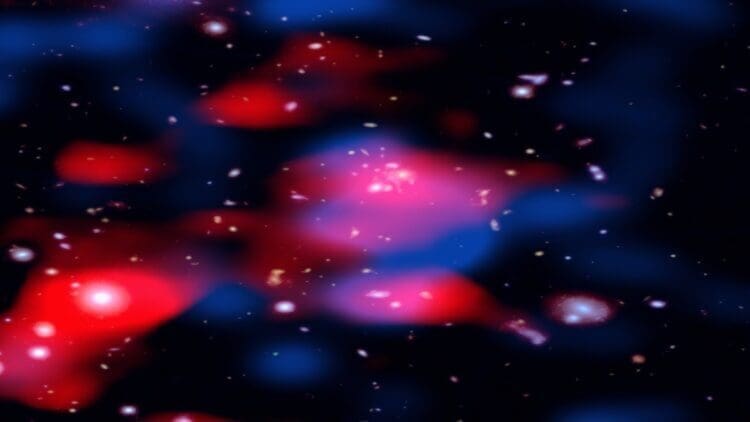Whenever we observe something new in the universe, we are actually looking into the past — for instance, the mini-halo that took shape 10 billion years ago. The reason lies in the fact that light needs time to travel before it reaches Earth, meaning what we see today may have happened thousands or even billions of years earlier. This concept is rooted in Einstein’s theory of general relativity, which shows that time behaves differently in space and that relativity affects everything in the cosmos — even objects only a few light-years away experience noticeable distortions.
How general relativity works
Imagine if travel at the speed of light was possible. If astronauts had to travel 5 million light years from point A to point B, they could get there in a blink of an eye in their perception. But, for us on Earth, this would take much longer. It’even worse if they had to come back. As time passes differently out there, for the astronauts a mission of a couple of days could be millions of years for humans on Earth.
The famous physicist Brian Cox argues that humans were never meant to search the cosmos and come back to Earth. On the other hand, discoveries can still be made. Powerful telescopes and observatories are doing the hard part of actively searching the universe and bringing news for scientists. Now, they just found a Mini-halo from over 10 billion years ago.
Mini-halo spotted billions of light years away
Scientists have just spotted the farthest-ever “mini-halo” — a cloud of charged particles swirling around a distant cluster of galaxies. This discovery could open new doors to understanding what the universe was like billions of years ago.
While studying a radio signal that’s about 10 billion years old, astronomers found this mini-halo — basically a fog of energetic particles — way out in space, much farther than any similar object found before. It’s huge too, stretching more than 15 times wider than our entire Milky Way, and packed with strong magnetic fields.
The findings have been accepted for publication and are already available online for other scientists to check out. One of the researchers, Roland Timmerman from Durham University, called it “astonishing” that such a clear radio signal came from so far away.
Where do these particles come from?
Mini-halos aren’t new, but before this, they had only been seen closer to us, in galaxy clusters nearby. These faint clouds of charged particles give off radio and X-ray waves, drifting through the empty space between galaxies. But seeing one this far back in space — and time — is something new.
Scientists have a few ideas about where these particles might come from. One theory points to supermassive black holes at the centers of some large galaxies in the cluster. These black holes launch powerful jets of particles into space. The puzzle is how those particles manage to travel far enough — and stay energetic enough — to create a mini-halo without fading out along the way.
The impact on future studies
Another idea is that these particles are created when high-speed charged particles crash into each other inside the galaxy cluster’s plasma. These collisions can break apart particles, producing the kind that eventually form the cluster we can detect from Earth.
What’s really cool is that this discovery shows these charged particles have been hanging around galaxy clusters since the very beginning — way longer than we thought. These particles also play a role in how stars form. When they disrupt the balance of energy or pressure in galactic gas clouds — or tangle with magnetic fields — they can stop the clouds from collapsing under gravity. No collapse, no new stars.






